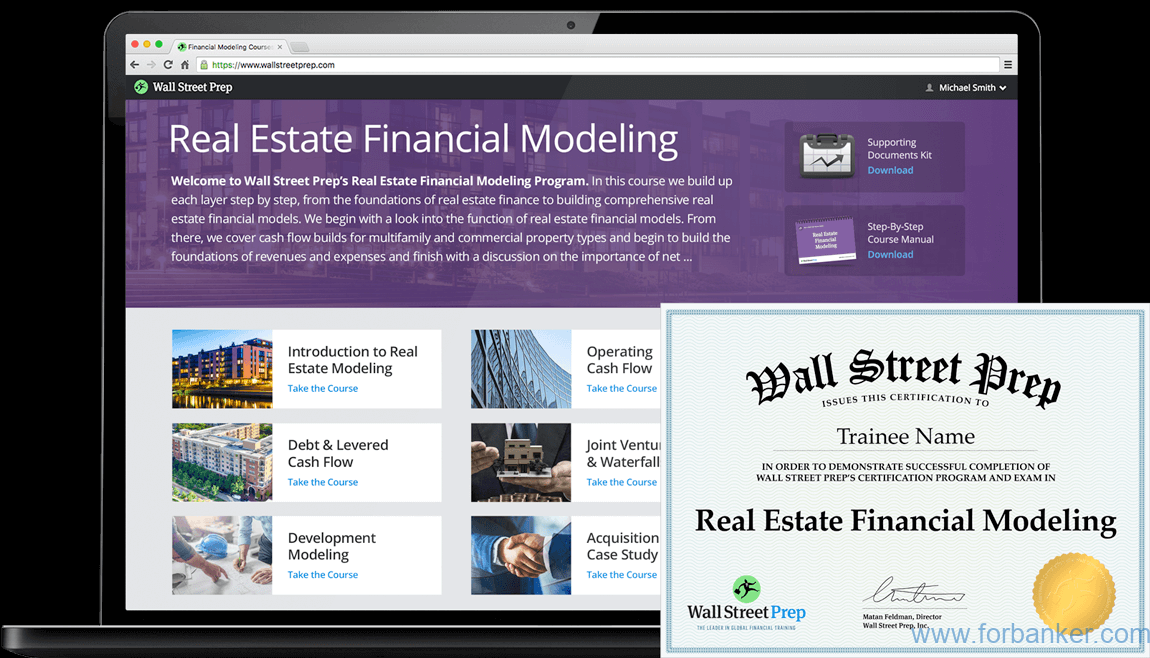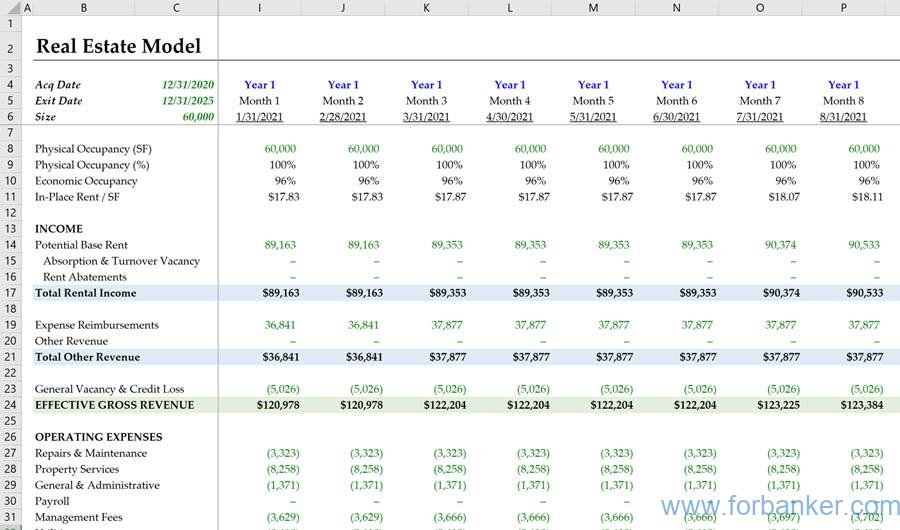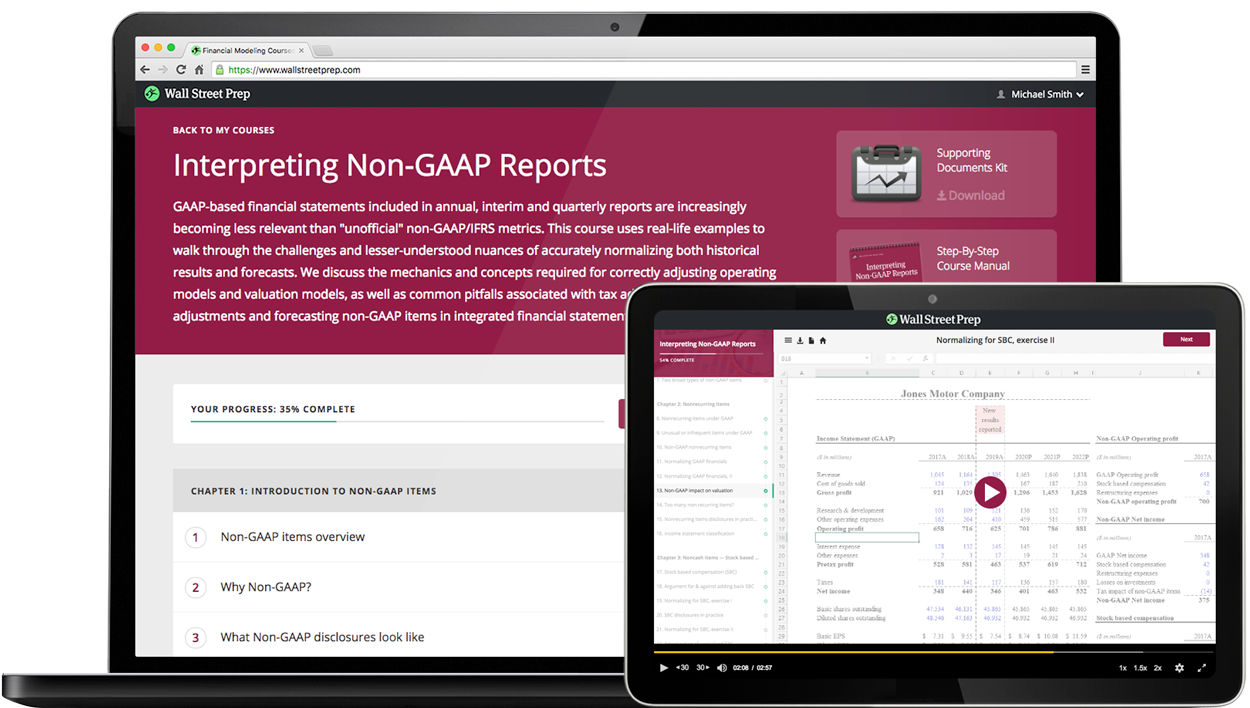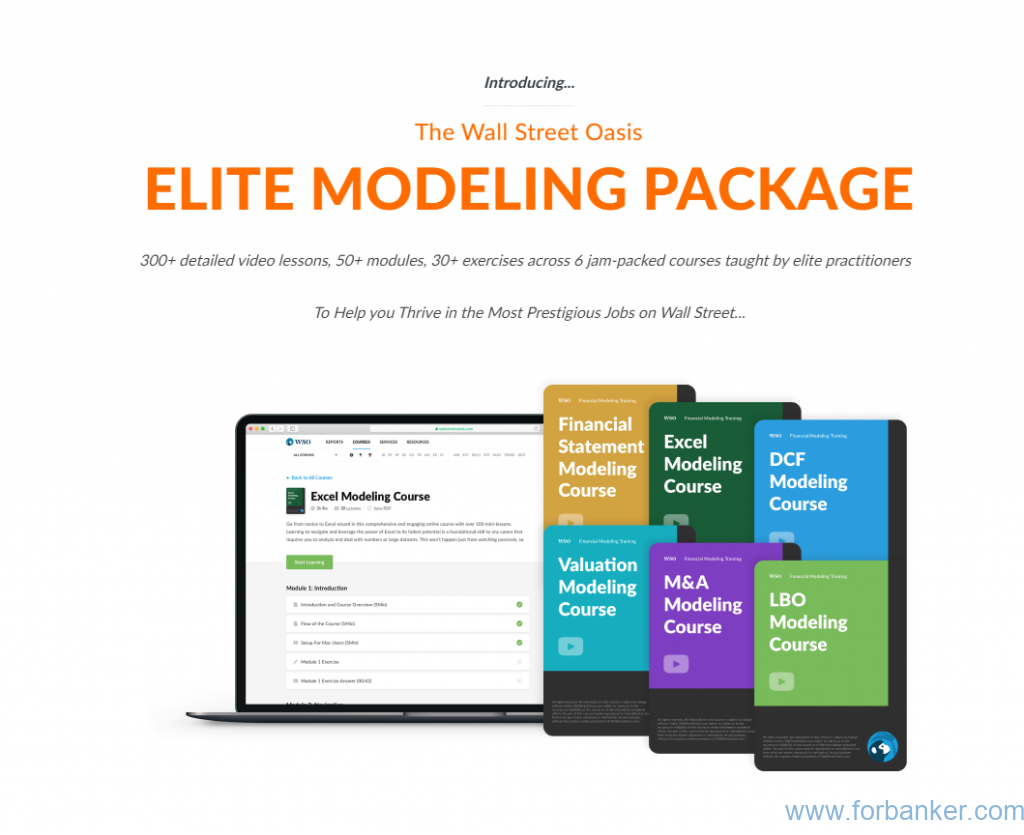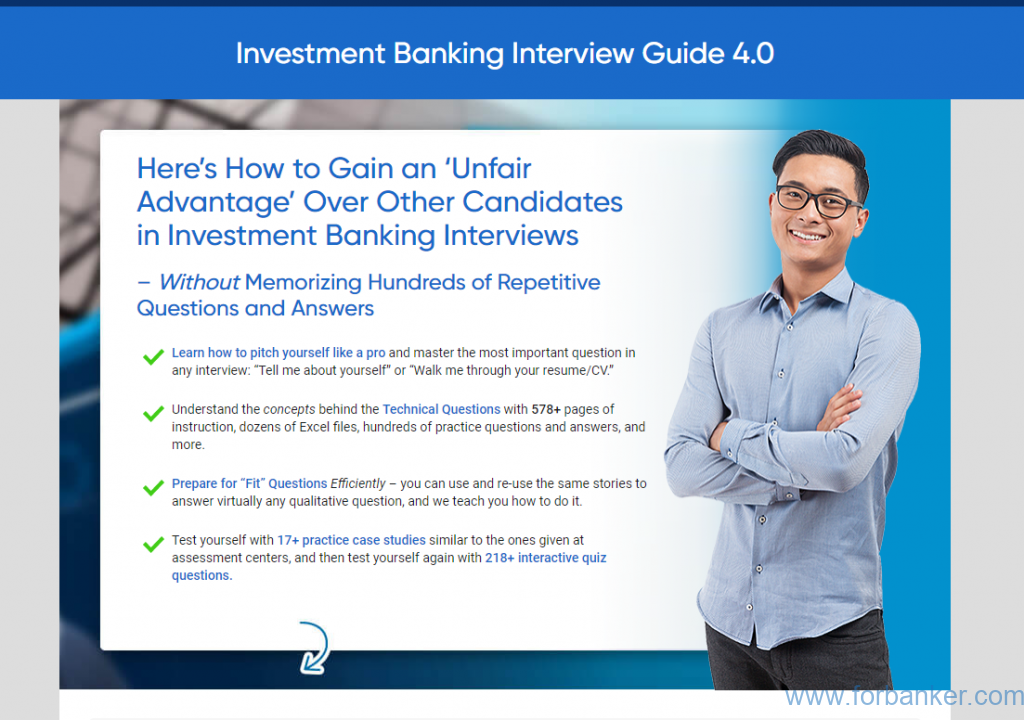Real Estate Financial Modeling(Wall Street Prep) 地产建模课程介绍
内容介绍
Real Estate Financial Modeling是一个系列课程,包含有9个Module(章节部分) ,分别讲述地产建模的不同的话题
非常适用于地产私募以及希望进入这个领域的同学使用
This course begins with the foundations of real estate finance and excel best practices, adding complexity piece by piece. By the end of the program, learners will build complete, industrial grade multifamily, office, retail and industrial models, including in depth treatment of the modeling of revenues, operating expenses, capital improvements, debt, and joint venture waterfalls
- Real estate financial modeling best practices
- Real estate investment and development theory
- How to utilize historical financials to build a multifamily acquisition model
- How to utilize Argus outputs to build a commercial acquisition model
- How to build a real estate development model
- How to model a debt schedule
- How to model a joint venture waterfall
本课程从房地产金融的基础和excel最佳实践开始,逐件增加复杂性。在课程结束时,学员将建立完整的、工业级的多户型、办公、零售和工业模型,包括对收入、运营费用、资本改善、债务和合资企业瀑布模型的深度处理。
- 房地产财务模型最佳实践
- 房地产投资与开发理论
- 如何利用历史财务数据建立多户收购模式?
- 如何利用Argus的产出建立商业采购模型?
- 如何构建房地产开发模式
- 如何建立债务表模型
- 如何建立合资企业瀑布模型
各个部分介绍
Real Estate Financial Modeling 1: Introduction
Section 1 of our Real Estate Financial Modeling Program. This course provides an introduction to the function of real estate financial models, the challenges presented by bespoke approaches, and Wall Street Prep’s approach to teaching Real Estate Financial Modeling. We will begin with a review of efficiency and formatting fundamentals that will be employed throughout the course. From there, we’ll begin to develop an understanding of the different types of real estate models.
Real Estate Financial Modeling 2: Operating Cash Flow
Section 2 of our Real Estate Financial Modeling Program. Real estate is all about cash flow. This module will cover cash flow builds for multifamily and commercial property types. We will build the foundations of revenues and expenses and finish with a discussion on the importance of net operating income. Each section will begin with the characteristics underpinning the cash flow for the property type at hand. After detailed discussions of various revenue and expense methodologies, concepts will be crystalized with step-by-step modeling walkthroughs in Excel.
Real Estate Financial Modeling 3: Non-Operating Cash Flow
Section 3 of our Real Estate Financial Modeling Program. Although real estate is valued based on operating cash flow, non-operating cash flows are integral to business plans. This module will cover leasing costs for commercial properties, capital improvements and costs associated with buying and selling a property. After detailed discussions of the various cost items within non-operating cash flow, the concepts will be reinforced with step-by-step modeling walkthroughs in Excel.
Real Estate Financial Modeling 4: Debt & Levered Cash Flow
Section 4 of our Real Estate Financial Modeling Program. Real estate is a highly levered asset class and an understanding of leverage is critical for any real estate investor. This module will serve as a primer on real estate debt, covering everything from different ways to finance an acquisition, to key terms in loan documents and how to model an amortization schedule. A significant portion of this module is dedicated to understanding the applications of leverage, reviewing key terminology and introducing debt-specific calculations. The module concludes with a step-by-step modeling walkthrough in Excel.
Real Estate Financial Modeling 5: Joint Ventures & Waterfalls
Section 5 of our Real Estate Financial Modeling Program. The waterfall is infamously part of most real estate interview modeling tests. This module introduces joint ventures and the theory behind waterfalls. After introducing key terminology and reinforcing the underlying theory, considerable time will be spent on a step-by-step walkthrough of how to model a waterfall.
Real Estate Financial Modeling 6: Summarizing & Analyzing the Model
Section 6 of our Real Estate Financial Modeling Program. Real estate financial models are tools for projecting the cash flows of a potential investment. The cash flow projections alone are not enough to analyze a potential investment. This module will cover how to summarize the outputs of a model to form the basis of an analysis by discussing key metrics and how to put these metrics into perspective.
Real Estate Financial Modeling 7: Development Modeling
Section 7 of our Real Estate Financial Modeling Program. Real estate can be bought or built. Up to this point, the course has been focused on buying property. This module will unpack the differences and similarities in modeling a development and an acquisition. Development specific topics such as construction budgets and lease-up will be covered as well as the nuances of development financing. Armed with the real estate financial modeling fundamentals previously discussed, this module will also go into detail on how to model a development step-by-step.
Real Estate Financial Modeling 8: Office Building Acquisition Case Study
Section 8 of our Real Estate Financial Modeling Program. Building well-formatted and extensive models is the name of the game for those working for institutional firms or preparing materials for a potential investor. But, many situations – whether a modeling test or first pass at a potential personal investment – necessitate building a model quickly from a blank Excel sheet. This acquisition case study is an opportunity to test everything you’ve learned utilizing the key pieces of information you would have in the real world. After attempting the case study independently, follow along to see how best to stay organized and which “corners to cut” when under time constraints.
Real Estate Financial Modeling 9: Multifamily Building Development Case Study
Section 9 of our Real Estate Financial Modeling Program. Building well-formatted and extensive models is the name of the game for those working for institutional firms or preparing materials for a potential investor. But, many situations – whether a modeling test or first pass at a potential personal investment – necessitate building a model quickly from a blank Excel sheet. This development case study is an opportunity to test everything you’ve learned utilizing the key pieces of information as you would in the real world. After attempting the case study independently, follow along to see how best to stay organized and which “corners to cut” when under time constraints.
购买
请到官网购买
Please purchase from official website
课程原链接
www.wallstreetprep.com/self-study-programs/real-estate-financial-modeling/
希望看到这里的童鞋们:事事如意,(面试)试试如意!
有任何疑问可添加微信号(扫码添加):
美东时间作息时间回复

福贝壳儿 » Real Estate Financial Modeling(Wall Street Prep) 地产建模课程介绍

福贝壳儿 » Real Estate Financial Modeling(Wall Street Prep) 地产建模课程介绍


